Baby Charlotte, who came into the world at the Royal Darwin Hospital on March 3 this year, began life as an embryo.
That, in itself, is not remarkable – every one of us begins life as that tiny, compressed ball of DNA, a galaxy within a dust mote.
It is what happened next to Charlotte that makes her unique.
She did not grow within her biological mother’s uterus, instead, she was implanted in another’s.
Charlotte is the first locally conceived and delivered surrogate baby since the Territory became the last jurisdiction in Australia to legalise the practice in late 2022 (another surrogate baby, who arrived in July 2023, was conceived in the Top End but delivered in Sydney).
Charlotte’s surrogate birth mother, Josie, pushed and pushed and pushed – she was in active labour for 11 hours.
Charlotte’s biological mother, Kelsey, pulled her daughter out into the world.
Her biological father, Aaron, cut the umbilical cord.
These moments of ecstasy and agony are captured in a photo album that will be given to Charlotte when she is older.
It will be years before she understands the history made by her birth, and the pain that preceded it.
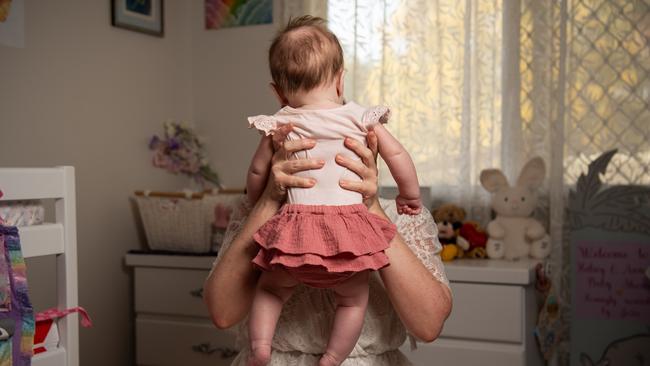
Bringing up the rear
Prior to December 20, 2022, Charlotte’s birth would not have been possible – or, more correctly, it would not have been possible in the NT.
For the decade beforehand, the Territory was the last jurisdiction in Australia that had failed to legislate for non-commercial (i.e. altruistic) surrogacy.
The ACT set the pace, establishing the practice in 2004, followed in turn by Western Australia and Victoria (2008), South Australia (2009), Queensland (2010), NSW (2011) and Tasmania (2012).
As far back as 2018, then-Attorney-General and Health Minister Natasha Fyles had asked her two departments to craft advice on designing and implementing surrogacy laws for the jurisdiction, but in true Territory fashion, a bill was not passed until May 2022.
In a rare display of bipartisanship, it sailed through the Legislative Assembly and into law with only minor amendments to the wording of some provisions.
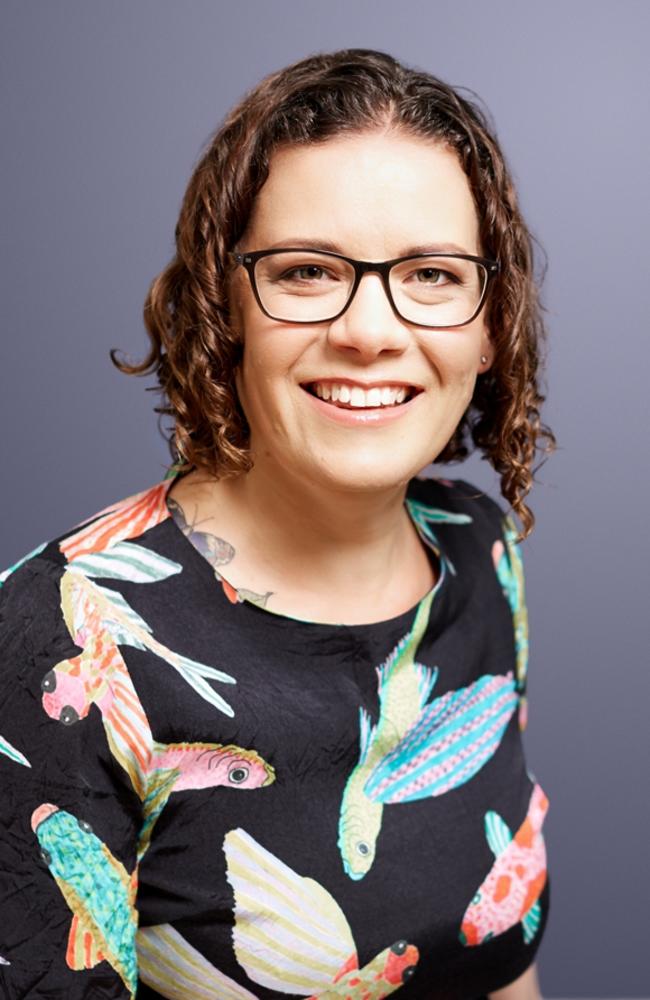
Renowned surrogacy lawyer Sarah Jefford OAM is an author and podcaster who shepherds the vast majority of the 115 or so surrogacies in Australia each year – including Kelsey and Aaron’s – through the complicated legal process.
She said that previously, local couples were forced into agonising choices.
They could move interstate and try and find a surrogate via social media (the way 22 per cent of surrogate mothers are found), or play Russian roulette in developing countries where commercial surrogacy is a feature of the system.
“I’ve known people that have packed up and moved to other states like Queensland or Western Australia, if they wanted a child and wanted to do surrogacy,” Ms Jefford said.
She suspects overseas arrangements still loom large for aspiring parents.
“To find a surrogate is the challenge,” Ms Jefford said.
“There’s no law stopping someone from going overseas.
“We don’t like people doing that as a matter of public policy, but we don’t stop them.”
Impossible to inevitable
Kelsey and Aaron, high-school sweethearts who celebrated their 20th anniversary a few weeks after Charlotte’s birth and live together at Palmerston among a menagerie of cats and dogs, had no need to look further afield than their friendship circle to find their surrogate, Josie.
Finding Josie, who is the wife of Aaron’s best friend since school, Josh, was not the difficult part.
In fact, Josie had been pitching the idea for years, each mention becoming increasingly serious as Kelsey and Aaron’s failed IVF cycles mounted.
The difficulty lay in convincing themselves they needed Josie.
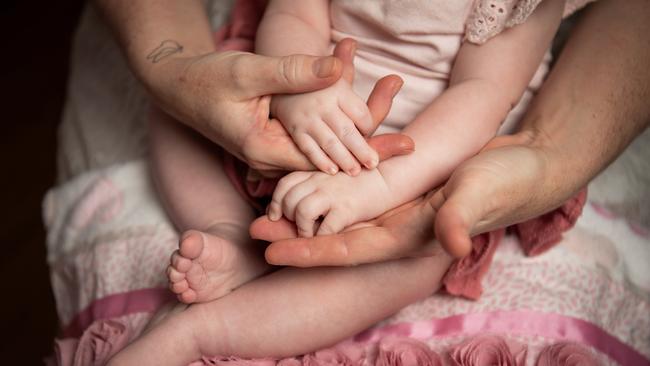
This was partially due to Kelsey’s deep-seated desire to feel new life within her, and partially because of the stigma they feel still attaches to surrogacy (although they are immensely proud of their own journey), and the prior illegality of the practice in the Territory
This stigma is why they asked that their surnames be withheld.
“We decided to start trying for a child in mid 2015,” Kelsey says.
“People were really blasé about it, you know, just have sex this many times a week and blah blah blah.
“We tried for about 18 months to two years for a doctor to suggest Aaron getting a sperm test.”
It came back that there were problems. IVF was now on the cards.
The first clinic they went to, interstate, said it would all be lickety-split.
“They said, you know, we should get you pregnant after two transfers, it should be fine,” Kelsey says.
And the clinic was true to its word – the second transfer took.
But Kelsey suffered a miscarriage, as she did on the third and seventh transfer.
“When we had the third one and it miscarried again, we started panicking,” she says.
“We had seen a heartbeat this time, so we thought we’d gotten past it, and then when we lost that one, I think that’s when everything went downhill.
“You couldn’t be strong and hopeful anymore.”
As the pair’s mental health declined, so did their support network.
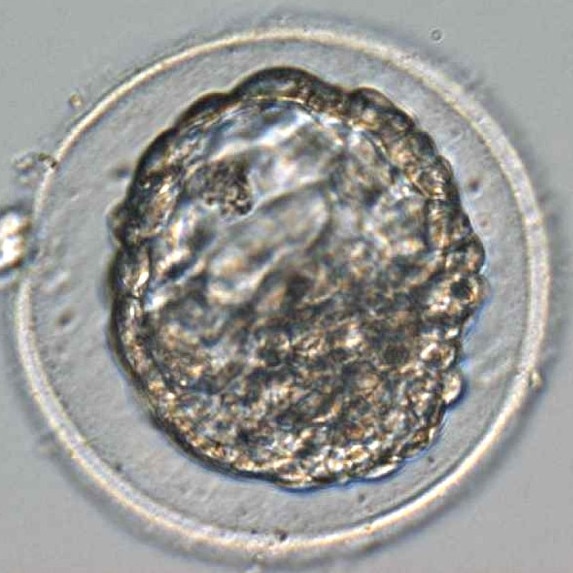
“I think probably from about sort of three or five years in, our friend circle went down and we both lost a lot of very, very close friends because our mental health was so unstable,” Aaron says.
After switching to Top End fertility clinic Repromed, a suite of additional testing was finally recommended.
“They picked up hormonal problems and lining problems within me,” Kelsey says.
It was around this time Josie first mentioned the ‘S’ word.
“It was just a friendly, passing, ‘I would always carry your babies’, and we dismissed it, because we were nowhere near ever thinking about that, at that point,” Aaron says.
But after seven more transfers, taking their total to 14 (most authorities recommend only six to eight transfers at most), they knew Josie, and her husband Josh, were their last, best hope of becoming parents.
“We invited them out to dinner. I had to have a few drinks and I think I was crying on the drive in because I was so nervous,” Kelsey says.
She needn’t have been.
“Before we even asked the question, when we were sitting down, they were sort of like, we know what this is about, and yes, of course,” Aaron says.
The surrogate
There were endless legal, medical and psychological appointments throughout Josie’s gestation.
Both couples appointed lawyers. A contract was signed. The two couples had individual, then group, counselling. Josie underwent a number of obstetric appointments.
It took six months of preparation before the embryo could be implanted and came at a cost of about $20,000 for Kelsey and Aaron (plus an additional $80,000 for six years of IVF).
Josie, who has three children of her own with Josh, their family already being complete, says the reams of paperwork and dozens of appointments were far outweighed by the knowledge of the priceless gift she was giving.
“We just wanted to help Aaron and Kelsey achieve what we had,” she says.
Josie feels deep love for the baby girl who is not quite her daughter, not quite her goddaughter.
“We have an amazing connection,” she says.
“She’s beautiful. We just love her so much and can’t wait to see her grow up and just be a part of our lives.”
Kelsey says she was worried she would feel “resentment” towards Josie, a bitterness that her child was growing inside another woman.
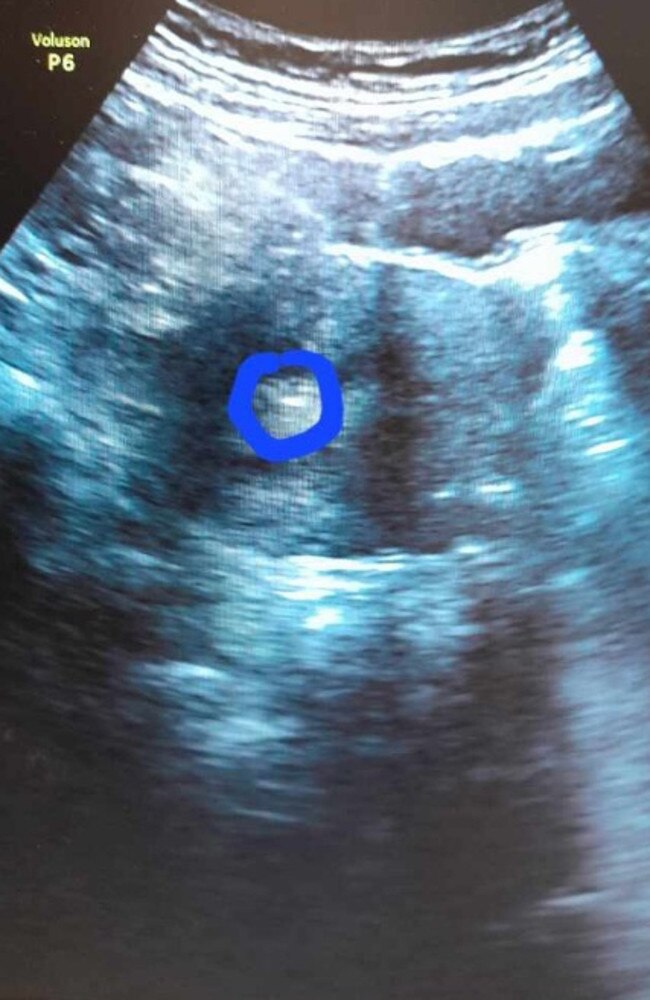
“I saw that belly and it was the complete opposite, it was so exciting,” she says.
“Every time I saw her, I’d be touching it and I knew Charlotte was only that far away from us.”
Kelsey and Aaron struggled initially with how to define the relationship between Josie and Charlotte.
Josie calls the baby ‘my Charlotte’, so it was decided that Charlotte’s surrogate mother would be ‘my Josie’ to her.
“Josie doesn’t feel any maternal bond to Charlotte, and yet it’s a stronger bond than she’ll ever have with anybody else’s children, besides her own,” Kelsey says.
New life
Towards the end of the conversation, a tiny cacophony emerges from the baby monitor.
Charlotte has woken.
Aaron darts into her bedroom, as attentive as a well-trained maître d’hôtel, and emerges with a pink-clad baby whose eyes are hooded with sleep.
“There will always be some form of jealousy when I see other pregnant women,” Kelsey says.
“But that’s something I’ve accepted now as part of the journey.
“For so long, we weren’t even thinking about a child, we were thinking about a pregnancy.
“We were imagining that the ultimate goal of IVF was for me to be pregnant and I would imagine that belly.
“But we finally, after all those years, got to the point where we realised: that’s just nine months.
“Charlotte is the rest of our life.”
She is handed over for a cuddle.
Her little bones are insulated with baby fat. She smells sweet and aromatic: the smell of a newborn.
I gently pinch the chubby skin on her thigh as she gurgles and coos.
She is real.

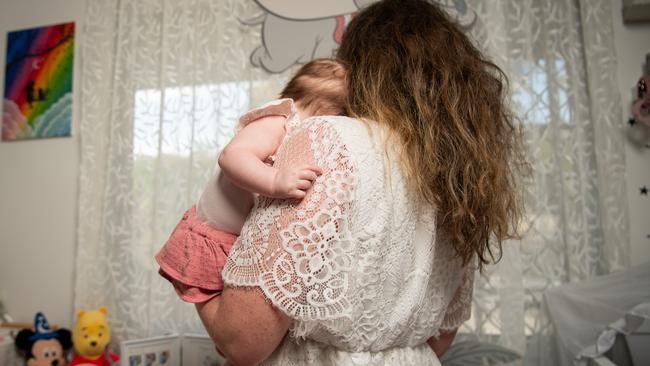
Add your comment to this story
To join the conversation, please log in. Don't have an account? Register
Join the conversation, you are commenting as Logout
The Stem Academy helping young Indigenous women beat the odds
In the NT, the percentage of Indigenous students who stay in school is the lowest in Australia at 33 per cent but the Young Indigenous Women’s Stem Academy is changing that.
Hockey NT launches Northern Gateway Initiative master plan
Fuelled by its exclusion from the Australian competition, Hockey NT has officially launched a four-year master plan to safeguard and grow the code. Here’s what you need to know.